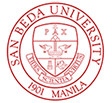Correlation of Resilience with Good Relations with Neighbors
Keywords:
neighborhood, physical order, resilience, social capital, social orderAbstract
One of the internal resources being performed to have a better performance in different aspects of the individual life is resilience. The quality of resilience is frequently attributed to individuals who overcome all challenges and problems in life. The purpose of this study was to analyze the presence of correlation between resilience as a trait and neighborhood as an environmental factor. Wherein, neighborhood was further classified into five (5) underlying factors namely, the Physical Order, the Land Use and Service, the Social Norms and Values, the Social Capital, and, the Social order. This quantitative, cross-sectional, correlational study has utilized self-rated standardized questionnaires— the Brief Resiliency Scale of 2008 by Smith, B. W., Dalen, J., Wiggins, K., Tooley, E., Christopher, P., & Bernard, J., and the Perceived Neighborhood Scale of 2013 by Gariepy G, Smith KJ, Schmitz N. The sample consisted of eighty (80) selected participants in Barangay San Roque, Murphy, Quezon City. Based on the results of the study, two (2) among neighborhood underlying factors were found to have significant negative relationship with resilience, specifically the Physical order (p=0.047) and the Social order (p= 0.023). Conversely, there was no significant relationship found between resilience and the other underlying factors of neighborhood. Hence, it is recommended that future researches should further focus on other factors that may have stronger link with resilience such as local community and family support, and/or educational environment and teacher bonding for student populations.
References
Anderson, P., Jane-llopis, E., &Hosman, C. (2011). Reducing the silent burden of impaired mental health. Health Promotion International, 26(suppl 1), http://doi.org/10.1093/heapro/dar051
Brodsky, A. E. (1996). Resilient single mothers in risky neighborhoods: Negative psychological sense of community. Journal of
Community Psychology, 24(4), 347–363. https://do.org/10.1002/(sici)1520-6629(199610)24:4<347::aid-jcop5>3.0.co;2-r.
Cheung, K., Taillieu, T., Turner, S., Fortier, J., Sareen, J., MacMillan, H. L., Boyle, M., Afifi, T. O. (2018). Individual-level factors related to better mental health outcomes following child maltreatment among adolescents. Child Abuse & Neglect, 79, 192–202. https://doi.org/10.1016/j.chiabu.2018.02.007
Färber, F., & Rosendahl, J. (2018). The association between resilience and mental health in the somatically ill. DeutschesAerzteblatt Online. https://doi.org/10.3238/arztebl.2018.0621
Gariepy G, Smith KJ, Schmitz N. (2013). Diabetes distress and neighborhood characteristics in people with type 2 diabetes. Journal of Psychosomatic Research. 75:147-152.
Geldhof, G. J., Little, T.D. & Colombo, J. (2010). Self -regulation across the life span, Handbook of life-span development1 (2), 116-157.
Greenfield, E.A., & Reyes, L. (2014). Continuity and change in relationships with neighbors: implications for psychological well-being in middle and later life. Journals of Gerontology, Series B: Psychological Sciences and Social Sciences, 70(4), 607–618, https://doi.org./10.1093/geronb/gbu084.
Henderson, M. (2013). Growing up with domestic violence: The voices of resilience. https://mro.massey.ac.nz/bitstream/handle/10179/4868/02 _whole.pdf
Hidaka, B. H. (2012). Depression as a disease of modernity: Explanations for increasing prevalence. Journal of Affective Disorders, 140(3), 205–214. https://doi.org/10.1016/j.jad.2011.12.036
Institute for Economics and Peace(2018) Positive peace report 2018: Analysing the factors that sustain peace. https://vision of humanity.org/reports/.
Jaffee, S. R., Caspi, A., Moffitt, T. E., Polo-Tomás, M., & Taylor, A. (2007). Individual, family, and neighborhood factors distinguish resilient from non-resilient maltreated children: A cumulative stressors model . Child Abuse & Neglect, 31(3), 231–253. https://doi.org./10.1016/j.chiabu.2006.03.011
Lally, J., Tully, J., & Samaniego, R. (2019). Mental health services in the Philippines. BJPsych International, 1–3. https://doi.org/10.1192/bji.2018.34
Lake, J., & Turner, M. (2017). Urgent need for improved mental health care and a more collaborative model of care. The Permanente Journal. https://doi.org/10.7812/tpp/17-024
Lerner, R. M., Weiner, M. B., Arbeit, M. R., Chase, P. A., Agans, J. P., Schmid, K. L., & Warren, A. E. A. (2012). Chapter 14 Resilience Across the Life Span. Annual Review of Gerontology and Geriatrics, 32(1),(pp. 275–299). https://doi.org/10.1891/0198-8794.32.275
Masten, A.S. (2015). Ordinary magic: resilience in development. Guilford Publications.
Morton, M. J., & Lurie, N. (2013). Community Resilience and Public Health Practice. American Journal of Public Health, 103(7), 1158–1160. https://doi.org/10.2105/ajph.2013.30135
Ozbay, F., Johnson D.C., Dimoulas, E., Morgan, C.A., Charney, D., & Southwick, S. (2007). Social Support and Resilience to Stress: from Neurobiology to Clinical Practice. Psychiatry (Edgmont). 4(5):35-40.
Ross, C. E., &Mirowsky, J. (1999). Disorder and decay. Urban Affairs Review, 34(3), 412–432. https://doi.org/10.1177/107808749903400304
Ruvalcaba-Romero, Gallegos-Guajardo and Villegas-Guinea. (2014). Validation of resilience scale for adolescents (READ) in Mexico. Journal of Behavior, Health & Social Issues 6(2)21-34. https://doi.org/10.5460/jbhsi.v6.2.41180.
Seligman, M. E. P., & Fowler, R. D. (2011). Comprehensive soldier fitness and the future of psychology. American Psychologist, 66, 82–86. https://doi.org/10.1037/a0021898.
Smith, B. W., Dalen, J., Wiggins, K., Tooley, E., Christopher, P., & Bernard, J. (2008).The brief resilience scale: Assessing the ability to bounce back. International Journal of behavioral Medicine, 15(3), 194-200.
Southwick, S. M., Sippel, L., Krystal, J., Charney, D., Mayes, L., &Pietrzak, R. (2016). Why are some individuals more resilient than others: the role of social support. World Psychiatry, 15(1),77–79. https://doi.org/10.1002/wps.20282
Stafford, M., De Silva, M., Stansfeld, S., & Marmot, M. (2008). Neighbourhood social capital and common mental disorder: Testing the link in a general population sample. Health & Place, 14(3),394–405. https://doi.org/10.1016/j.healthplace.2007.08.006
Tiet, Q. Q., Huizinga, D., & Byrnes, H. F. (2009). Predictors of Resilience Among Inner City Youths. Journal of Child and Family Studies, 19(3),360–378. https://doi.org/10.1007/s10826-009-9307-5.
Wandersman, A., & Nation, M. (1998). Urban neighborhoods and mental health: Psychological contributions to understanding toxicity, resilience, and interventions. American Psychologist, 53(6),647–656. https://doi.org/10.1037/0003-066x.53.6.647
Windle, G., Bennett, K.M., & Noyes, J. (2011). A methodological review of resilience measurement scales. Health and Quality of Life Outcomes, 9(8), 2- 18. https://doi.org/10.1186/1477-7525-9-8
Zautra, A.J., Hall, J.S., &Murray, K.E. (2010). Resilience: A new definition of health for people and communities. In J.R. Reich, A.J. Zautra, & J.S. Hall (Eds). Handbook of Adult Resilience (pp. 3-30). Guilford
- PDF | 150
- Abstract Views | 170
Published
How to Cite
Issue
Section
Copyright (c) 2023 Margarette Cayetano, Pocholo Autencio, Walter Jerome Cabale

This work is licensed under a Creative Commons Attribution-NonCommercial-NoDerivatives 4.0 International License.











